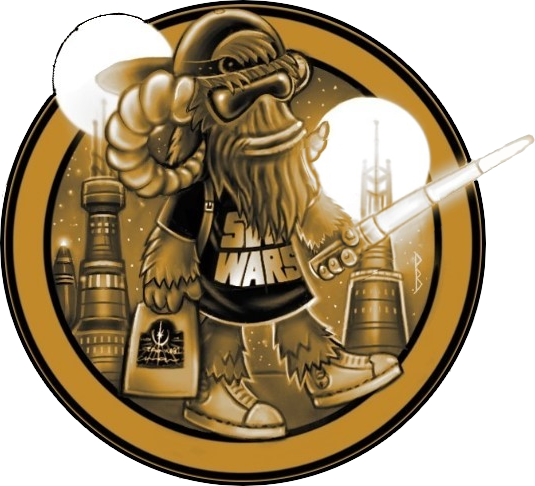Chatting with ILM Publicity, Hal Hickel looks back to the middle of the last decade and the making of Rogue One, specifically his work on K-2SO and the incredible Battle of Scarif which came together in a far more organic way than one might imagine.
ILM: Tell me how K-2SO came to be?
HH: It was a whole journey. When we started the project, even before Alan Tudyk was cast, Gareth was very keen to explore the idea of a droid with an expressive face. Strictly speaking, that would generally be outside of the style book of Star Wars. Droids in Star Wars typically are industrial, with very simplistic designs. Even ones that are anthropomorphic, like Threepio, don’t have moving face-parts. Even their eyes don’t move. That’s just Star Wars. But we thought, “hey, this is interesting. Let’s look into this.” We did some tests and things. Part of the problem though is that if you’re going to go down the road of an expressive metal droid face, you’re dealing with hard-surface pieces, not rubber skin. You really have to get quite detailed before you can get into something that can express emotion. You have to have, at minimum, eyebrows that can make expressions. A mouth that can do the same. There’s more than that, but those are the basic things. You also can’t just go in a little bit, you have to go quite a ways down the road. With that said, some of those movements can start to feel overly complex, and not very Star Wars.
ILM: How did you realize the sequence of the Star Destroyers, ‘Persecutor’ and ‘Intimidator’, colliding?
HH: I handed that off to a great Animator by the name of Euising Lee. He’s a terrific artist, and he’s especially gifted in his ability to realize spaceship action, and also camera work. He was able to take the idea and just run with it. He made a mini feature out of it; just a huge meal of all these shots. We showed it to Gareth, and kind of boiled it down into the shots that we wanted and made a shorter version of it. But he really took John’s idea and pushed it forward visually into a really terrific series of shots. That was a really fun process. The whole space battle was tough, because, as John previously mentioned, there were a lot of moving parts. “When are we with the action on Scarif? When are we with Raddus? When are we with the fleet in battle?” It was tough because you can’t kick out little iterations of shots. It’s laborious to reanimate an entire chunk of space battle to see how it plays. So we tried to repurpose old pre-vis that sort of fit the bill, and then we’d quickly do temporary versions of shots to fill holes and give editorial something to plug in to figure out when we were going to be and where, and more importantly, what the goals were. The whole thing with Admiral Raddus waiting for the transmission from the squad on Scarif seems obvious, but there were versions of the space battle that didn’t play out like that, where instead he was directing the fleet and just trying not to get blown up. A lot of this gelled out of story meetings, and the work that Gareth Edwards was doing, and Tony Gilroy too. The battle took awhile to come together, but the center piece – the great moment where it all goes silent when the ships are falling, and they puncture the Shield Gate. It turned out perfectly.
You can listen to our series of interviews with Hal on Making Tracks, along with a special episode where we discussed his long career and work in the Star Wars galaxy.
The next couple of weeks will see new episodes of Making Tracks bring you interviews with three Rogue One creatives; Guy Henry, the man behind Grand Moff Tarkin, puppeteer Brian Herring and Creature Shop supremo Neal Scanlan, and in 2022 Fantha Tracks will be sitting down once again with director Gareth Edwards to discuss his latest film True Love and of course Rogue One.
- Hardcover Book
- Ireland, Justina (Author)
- English (Publication Language)
- 272 Pages - 03/01/2022 (Publication Date) - Random House/Star Wars (Publisher)


